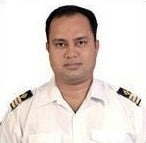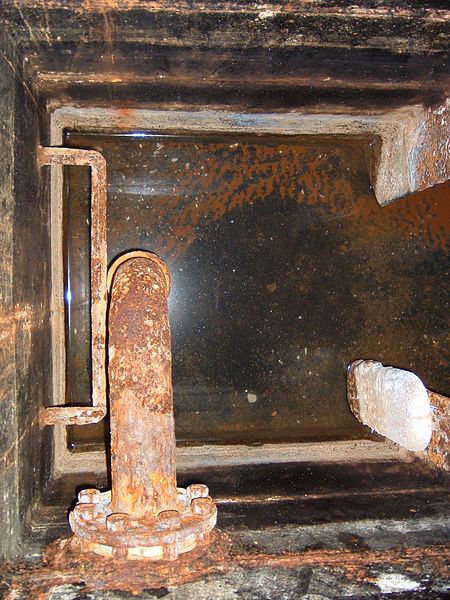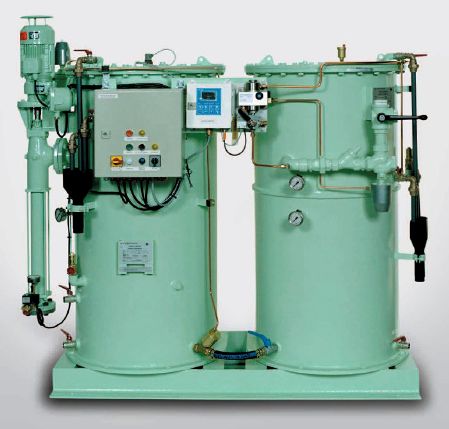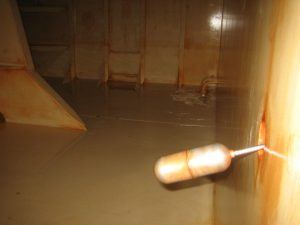How Good Bilge Management Practices Help Improve OWS Performance?
As learnt in earlier articles – Factors affecting OWS on ships and 20 Important Factors for OWS Operation, the optimal performance of the Oily Water Separator (OWS) depends on various factors, namely design factors, operational factors, bilge management etc. In this article we shall discuss some good bilge management practices that help in optimizing the performance of the Oily Water Separator. No matter what equipment is installed onboard ships, if the bilge management is not proper the Oily Water Separator (OWS) is bound to malfunction.
Bilge Management
In the engine room the bilges and bilge wells are located at the very bottom of the engine room for collecting oil and water from leakages, condensate and wastes so that they can be pumped to the bilge holding tank. Clean bilges are the first line of defense against marine pollution. All seasoned marine engineers know that if the bilges are clean and dry almost all the worries concerning Port State inspections are over. Dirty engine room bilges are one of the biggest detainable deficiencies in port state inspections.
Mentioned below are some of the good practices and tips for efficient bilge management:
- Used or waste oil should not be intentionally put in the bilges or bilge tank. All oil should be collected and put in the separated oil tank or dirty oil tank. Thereafter it can either be burnt in the incinerator or landed ashore
- Discarded chemicals should not be disposed off in the Bilge tank as pH of water above 10 and below 4 can cause chemical emulsification of the bilge water and lead to difficulty in separation
- Put drip trays where there are leakages and thereafter rectify and stop the leakages
- Primary bilge tank is provided in new ships and these should be used properly and not bypassed. Use of the primary bilge tank increases the effectiveness of the Oily Water Separator as most of the oil is removed here. The primary bilge tank helps in separation of the oil from the water and the oil can be visually seen and put in dirty oil tank and the cleaner bilge water can be put to the bilge tank. Steam coils are provided in the primary bilge tank and they can be used for effective separation
- Use clean drain tank effectively. In tropical climates there is condensation of more than 1-2 cubic meters per day and this water if allowed to go to the bilge tank will increase the load of the oily water separator. As this is mostly clean water, it should not be allowed to go to the bilge tank; instead it should be put to the clean drain tank and thereafter properly disposed. The leakages from the fresh water and sea water pumps should also be put in the clean drain tank
- Use mechanical seals where possible. Mechanical seals though expensive lead to cleaner engine rooms as there is minimal or no leakages from the glands
- In conventional gland type pumps though the dripping water may appear insignificant, the small leakages can lead to build up of large amounts of water
- During new building, repair and retrofitting it must be remembered that, inlet piping should be smooth and without much undue bends to cause turbulence
- Inlet piping should have the least amount of valves, bends and other fittings. Where possible straight line valves like gate valves should be used over angle valves and globe valves to avoid turbulence
- The inlet piping just before the entry to the Oily Water Separator should be straight for a length equal to ten times the diameter of the piping and should be sufficiently sized to avoid pressure drop
- Vertical pipelines cause the shearing of the upcoming water and should be avoided as much as possible
- Small diameter inlet pipelines cause shearing of water and make the oil droplets smaller. These droplets are difficult to remove later therefore the inlet pipeline should be of proper diameter
- Sometimes there is some ingress of air which is generally unnoticed as the positive displacement pumps can handle some amount of air. Any fall in vacuum should be investigated as these air pockets can make the capacitance oil probes give wrong feedback and falsely activate the oil release valves
- Bilge cleaning chemicals must be oily water separator compatible. Wrong chemicals will make the oil soluble in water and could never be separated
- Dust and cargo residue should be picked up with a broom and scoop and not blown by air into the bilges. These particulate matters can cause stabilization of the emulsions
- Soot from the boilers and economizers should be put in a separate tank and disposed off. They should not be drained to the bilges
- When boiler blow down is to be done it should be done overboard and not in the bilges. As the conditioning chemicals can cause chemical emulsions
- Condensate from accommodation AC and ECR AC should not be put in the bilges, but should be put in separate tank or directly overboard
- Mopping water containing detergents as well as hand wash water should not be put in the bilge tanks
If care is taken in controlling entry of water and waste in the bilges there will not be any problem in running the Oily Water Separator as the later operates in its designed range.
Image Credits: nauticexpo, wikimedia
Disclaimer :
The information contained in this website is for general information purposes only. While we endeavour to keep the information up to date and correct, we make no representations or warranties of any kind, express or implied, about the completeness, accuracy, reliability, suitability or availability with respect to the website or the information, products, services, or related graphics contained on the website for any purpose. Any reliance you place on such information is therefore strictly at your own risk.
In no event will we be liable for any loss or damage including without limitation, indirect or consequential loss or damage, or any loss or damage whatsoever arising from loss of data or profits arising out of, or in connection with, the use of this website.
Do you have info to share with us ? Suggest a correction
Disclaimer :
The information contained in this website is for general information purposes only. While we endeavour to keep the information up to date and correct, we make no representations or warranties of any kind, express or implied, about the completeness, accuracy, reliability, suitability or availability with respect to the website or the information, products, services, or related graphics contained on the website for any purpose. Any reliance you place on such information is therefore strictly at your own risk.
In no event will we be liable for any loss or damage including without limitation, indirect or consequential loss or damage, or any loss or damage whatsoever arising from loss of data or profits arising out of, or in connection with, the use of this website.

About Author
Chief Engineer Mohit Sanguri is a Marine Chief Engineer (Class I Unlimited Power). He has 12+ years of experience as a Marine Engineer.
Latest Marine Technology Articles You Would Like:
- 10 Harmful Effects Of Impure Air On Ship’s Machinery
- 10 Important Things to Check While Starting Fuel Oil Purifier on Ships
- 10 Noteworthy LNG-Powered Vessels
- 10 Points for Efficient Turbocharger Operation On Ships
- 10 Practical Tips to Handle Engine Room Pumps
- 10 Precautions to Take Before Operating Controllable Pitch Propeller (CPP) on Ships
Subscribe To Our Newsletters
By subscribing, you agree to our Privacy Policy and may receive occasional deal communications; you can unsubscribe anytime.



















Excellent very infirmative,
after completing mechanical engg which course is the best to join as a marine engineer!!!!
@ Prabhu:
Go for GME course. For details, check this link-https://goo.gl/lDNbMX
valuable information